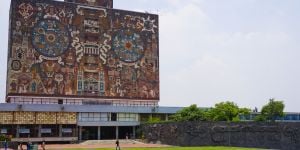
When relocating with children, the education system in the destination country is something you don’t take lightly as a parent. Governments repeatedly make education reforms a priority, but there’s nothing like ideal education system — yet. Singapore’s students have just been announced the highest-performing in international maths and science tests, while Finland has for four decades been the paradigm of successful education. Your expat children will have to adapt to an education environment that is unique to the country, but don’t underestimate the role of cultural and family values.
East Asia: Nurtured by the lessons of Confucius
The 2015 results of the Trends in International Mathematics and Science Study (TIMSS) have just been announced, and Singapore has ranked on the top of the list of 57 countries for having the highest-achieving primary and secondary students in maths and science tests.
The TIMSS rankings are published every four years, and this time about 600,000 students took the tests. Following the example of Singapore, the primary and secondary students of South Korea , Taiwan, Hong Kong, and Japan, who were tested in maths, are filling the top five positions. In the subject of science, the east asian countries are again outperforming, but Slovenia and Russia are also entering the top five.
But what makes east Asian students so sharp, and is it wise for the west to copy their education systems? East Asia's outstanding performance at school goes hand in hand with the culture, the family's values, and the parents' education background. East Asian children are raised with the principles of hard work, self-discipline, and persistence — anyone who can govern the pressure at school, the competitive exams, and heavy homework load stands a chance to study at Seoul National University or work for Samsung.
Europe: Variety in learning and teaching methods
Ireland, England, Norway, Slovenia, Finland, and Poland have triumphantly set foot in TIMSS's top 10 for their bright students (the exact ranking of each country depends on the subject and age).
Irish education values personalised learning experiences, and aspires to a more independent and creative schooling style, as opposed to memorisation. In Ireland there is only one competitive exam during a student's life — the Leaving Certificate that defines the entry into higher education.
The Scandinavian countries of Finland and Norway are traditionally ranking on the top of international education indexes for the flexible teaching styles, interactive science classes, extracurricular activities, valued leisure time, and first class vocational studies. In Finland the teacher's profession is highly respected because teachers are shaping the community by preparing the future citizens.
United States: With emphasis to entrepreneurship and innovation
The American students may not be performing as good as their peers in other parts of the world in international science, mathematics, and reading tests, but there's no doubt that the American higher education institutions are among the best in the world — admitting the biggest number of international students. American primary and secondary schools are valuing freedom, diversity, and creative thinking — making it a very liberal education system that fosters world leaders, innovators, and entrepreneurs.
Canada: Localised education system
What makes the Canadian education system special is the absence of a national education department and of an integrated system. Each province has its own elected education department with operative and administrative duties — responsible for the organisation of the elementary, secondary, technical, and vocational education. Thus, each province follows its own curriculum, and its assessment methods are based on the needs of the population, the language, etc.
According to 2016 data from The Organisation for Economic Co-operation and Development (OECD), 55% of Canadian adults are tertiary-educated. In addition, Canadian teachers are among the highest paid (65,000 USD for teachers with 15 or more years of experience), after Germany, Luxemburg, and the Netherlands.
However, Canada has set many more goals for 2020, such as the raise of literacy levels, the elimination of the academic gap and graduation rates between Aboriginal and non-Aboriginal students, and the engagement of students in a sustainable society.
Eurasia: Significant accomplishments
Russia has an outstanding literacy rate of 98% — stemming from an obligatory basic education. The hours in class are intense, as teachers often come up with unanticipated oral and writing tests, and criticise students' performance openly, in front of the whole class. Basic subjects, such as Russian literature, Russian language, Russian history, world history, maths, and sciences are mandatory for all students, while there are schools with specialisation on physics and mathematics, sports, music, and foreign languages that give emphasis on these areas of study.
Kazakhstan has made significant progress within its primary and secondary education that rightly reflects on the achievements of the primary and secondary students in the international maths and science tests. There is still notable disparity between urban and rural students, but there are scheduled reforms, including a new funding scheme, establishment of small classes, and investment in infrastructure and technologies.
Leave us a comment: How is the education system in the country you live? Does it give more value to independent thinking or is it more structured and homogeneous? In what environment would you like your children to be educated?



















